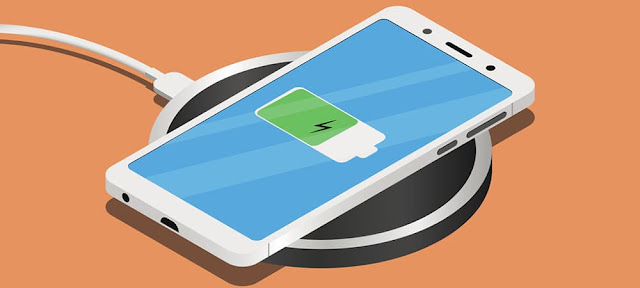The world is quickly going wireless. Inside a range of years and years, telephones and the internet became wireless, and presently charging has gotten wireless. Even though wireless charging is still practically in its beginning phases, the technology is expected to develop drastically over the course of the following, not many years.
The technology has now discovered its direction into a wide exhibit of useful applications, from cell phones and PCs to wearables, kitchen apparatuses, and surprisingly electric vehicles. A few wireless charging innovations are being used today, all pointed toward cutting links.
Car, medical services, and assembling businesses are progressively accepting the technology like wireless charging guarantees further developed versatility and advances that could empower the Internet of Things (IoT) gadgets to be controlled in a good way.
Also read: How Does The Temperature Influence A Magnet?
The worldwide wireless charging market size is assessed to be worth more than $30 billion by 2026. It offers extreme accommodation to clients and guarantees safe charging in risky conditions where an electrical flash could prompt a blast.
Wireless charging depends on the rule of attractive reverberation (MR), or inductive force move (IPT). Energy is moved from the charger using electromagnetic enlistment to a collector put at the rear of the gadget. The charger produces an exchanging electromagnetic field utilizing an enlistment loop, which the recipient curl changes over once again into power.
Radio Charging: The technique is for the most part liked to control gadgets that have little batteries and devour next to no power, for example, cell phones, wireless mice, wireless consoles, clinical gadgets, smartwatches, music players, and some more. The collector in the gadget is arranged to a similar recurrence as the transmitter, which permits the gadget to charge using radio waves.
Inductive Charging: The technique is generally used to charge medium-sized gadgets including cell phones, tablets, music players, and kitchen apparatuses. In inductive charging, the gadget should be set on a wireless or conductive charging cushion which is then connected to a plug.
Reverberation Charging: Resonant wireless chargers are utilized for gadgets that burn through a significant measure of force like PCs, electric vehicles, vacuum cleaners, or robots. In reverberation charging, the copper curl in the gadget is tuned to a similar electromagnetic recurrence as the loop in the force source.
Wireless charging is verifiably quicker, simpler, and more helpful. In any case, gadgets can go through emotional temperature vacillation during wireless charging, coming about into terrible showing and a diminished battery life cycle. Warm properties are viewed as an auxiliary plan thought by a larger part of designers. Inferable from the hearty interest for wireless charging, gadget makers will in general ignore apparently minor contemplations to get their items to advertise quicker.
Hearty advances have been made in EV batteries that permit them to convey more power and require less incessant charges. Notwithstanding, the capacity to plan a successful cooling framework stays probably the greatest test to guarantee battery wellbeing and ideal effectiveness. Electric vehicles utilize enormous batteries to store energy.
The bigger the battery size, the higher will be the pace of the current stream and warmth age. Following are the generally utilized battery warm administration strategies utilized.
Stage Change Materials (PCM): Phase change materials assimilate heat by changing from strong to fluid state. With one moment's change in temperature, these materials can assimilate a lot of warmth. Notwithstanding, volume change that happens during the cycle limits their application.
Blade Cooling: Cooling balances increment the surface, which builds the pace of warmth move. These balances normally have high warm conductivity and can productively accomplish cooling. In any case, they add a ton of extra weight to the framework.
Air Cooling: Air cooling utilizes the standard of air convection to assimilate heat from the battery pack. The air that runs over the surface diverts the warmth disseminated by the framework. The strategy is basic and simple, yet less proficient contrasted with fluid cooling.
Fluid Cooling: Liquid coolants have a higher warmth limit and warmth conductivity contrasted with air, because of which the framework performs all the more effectively. What's more, fluid cooling frameworks are smaller and will in general convey the best exhibition for keeping up with the necessary temperature.
At the point when Nikola Tesla created substituting current power (the sort that streams from present-day divider attachments) in the last part of the 1800s, he never envisioned that powerlines would some time or another come to befuddle the globe. He proceeded to devise gadgets that could send power wirelessly and longed for a worldwide organization that would supply machines wherever with force and data.
"All railways will be jolted," he said in a 1926 meeting with the magazine "Collier's." "However "maybe the most significant use of wireless energy will be the drive of flying machines, which will convey no fuel."
Tesla was half correct. The present cellphone networks permit link-free correspondence, however, an overall snare of wireless force stays slippery — and likely unthinkable in the structure that he envisioned. By and by, organizations, for example, the Massachusetts-based WiTricity and Israeli beginning up Electron, just as scholarly groups, keep on pursuing a world with fewer wires, one that acknowledges explicit parts of Tesla's vision.
Yet, to go standard, wireless charging will require global norms and more adaptable executions. Both are in progress. Charging while at the same time leaving will probably be coming to purchaser vehicles in 2022, for example. More flexible technology exists in the lab as well.
Standard wireless charging approaches work best between two items at a proper distance, yet in April a Stanford group declared a framework able to do effectively moving capacity to a moving gadget inside a safe distance — technology that could some time or another assist with cutting force strings at home and out and about.
"This will draw in a ton of premium from industry," says Younes Ra'di, a scientist at the City University of New York who has exhibited a similar procedure freely of the Stanford bunch. This exploration "made another bearing in planning wireless force move that could assist with building another age of wireless force move frameworks."
Electromagnetic waves convey energy just as data, so there's no hypothetical explanation that telecom organizations couldn't radiate force around as they do feline recordings and music. Be that as it may, reasonable difficulties proliferate. Long-range power-move analyzes ordinarily include light emissions zeroed in firmly on a beneficiary — envision charging a sun-based board with a laser pointer — that don't scale well to a large number of gadgets.
Over brief distances, nonetheless, an alternate methodology makes far and wide wireless charging more down to earth. An attractive field vibrating at one unique recurrence can make a close-by attractive field wobble accordingly, much as belting out the right pitch can break a wineglass.
Through this impact, one attractive loop can drive an electric current in a gadget joined to an accomplice curl, collectively of MIT analysts exhibited in 2007, enhancing thoughts Tesla spearheaded. The gathering turned off the technology into a new business in Watertown, Massachusetts, WiTricity, whose charging loops have since discovered their direction into a PC and electric vehicles.
The strategy conveys high measures of force with cablelike proficiency, yet the connection between the curls can be fragile. Upsetting the framework changes the recurrence of the attractive vibration, breaking the wireless association for such arrangements overall. "On the off chance that you move the transmitter or collector even a tad, you lose the impact," Randi says.








0 Comments
Thanks for your feedback.